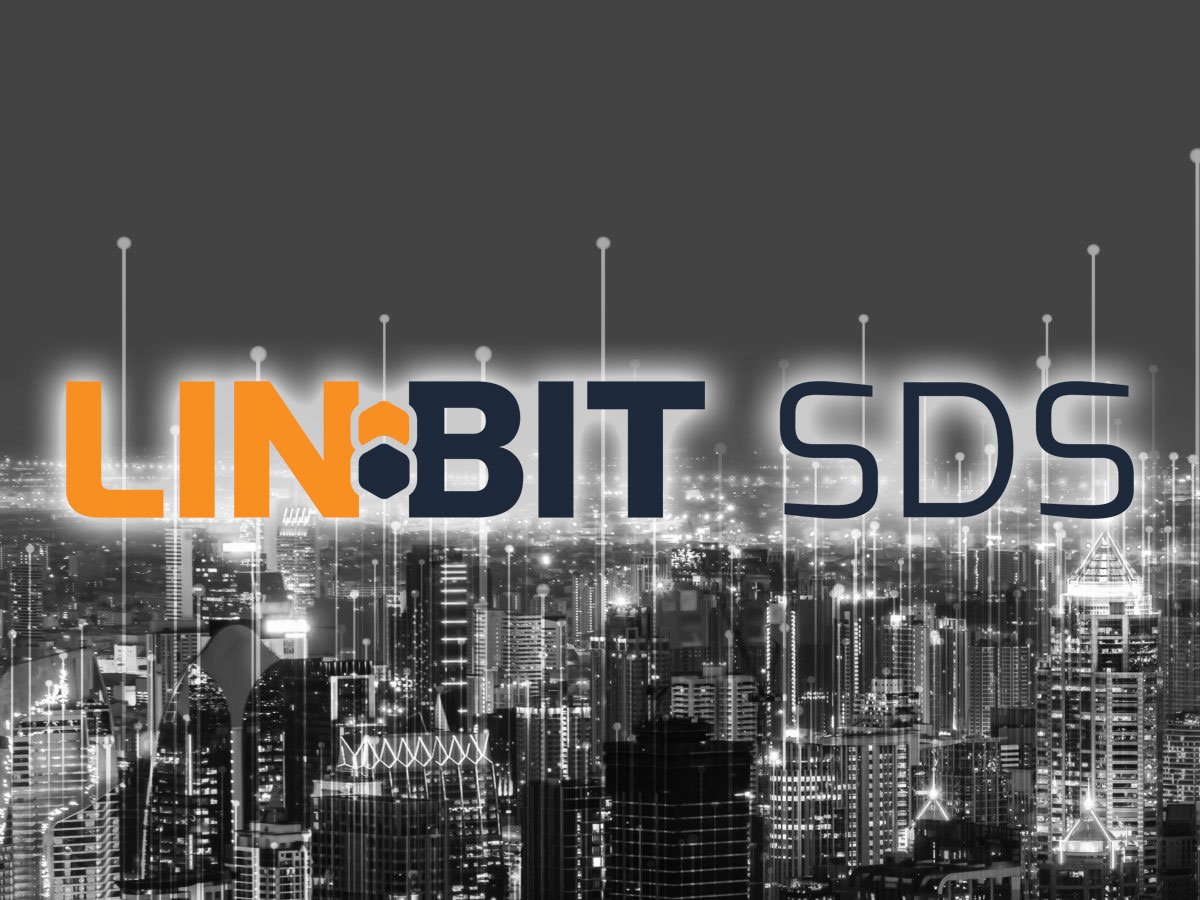Software-defined storage (SDS) is a technology used in data storage management that intentionally divides storage duties of software and hardware1.
Software is responsible for:
- Provisioning capacity
- Protecting data
- Controlling data placement
Physical hardware is where the actual data (the 0s and 1s) is2 stored.
SDS allows the storage hardware to be replaced, updated, and extended without removing regular operational procedures or abandoning other valuable software investments.
By separating software from hardware, you can gain efficiencies in both areas. For example, an SDS solution allows you to use commercial-off-the-shelf (COTS) hardware. This reduces your expenses by using industry-standard servers rather than more expensive proprietary storage.
The Future is SDS and the Future Is Now
A Gartner prediction that is often quoted in the industry states that by 2024:
- 50% of the global storage capacity will be SDS.
- By 2025, 85% of international companies will run containers in production.
SDS is often used together with cost-effective and high performance storage such as SSD or NVMe, to achieve for faster speeds, generally measured in input/output operations per second (IOPS)3.
These COTS combinations allow you to achieve benefits that were once available only to hardware-based storage arrays. Now you can unlock the potential of low latency, hyper-converged infrastructure. When used with Kubernetes, for example, such a combination promotes a developer-friendly, declarative, and agile environment that is open to auto-scaling with your growth.
Benefits of SDS
- Decrease data fragmentationWhen your data exists in so called “data silos”, where raw data is available in one department within your organization but unavailable in other departments, you may encounter issues. Sometimes you want data isolated, depending on what it is. But, for example, if you need to have data available for analytics or regulatory compliance, SDS can help.When an SDS platform supports several storage protocols – such as block, file, and object – you can incorporate all the data silos in a single infrastructure. An SDS solution with a robust API can also allow orchestration and automation and facilitate storage management.With an SDS solution consolidating disparate storage, monitoring and health assessment tasks also become more efficient.
- High-availability and disaster recoveryWhen data is easily stored and managed across different environments, businesses can reduce the economic shock of eventual failure. This includes failures of not just a single disk or node but also an entire site. And economic shock can mean not just the cost of replacing hardware but also potential loss of business. Will your customers wait patiently for you to restore services or will they use the downtime as an opportunity to explore your competitors’ offerings?When SDS is used, data can be saved and replicated to several locations simultaneously, as it is created or modified. This removes the need for your team to move data “by hand”, in case of a disaster. This also means that SDS is well-adapted to cloud-based solutions.This makes it easy to guarantee multi-site high-availability for applications hosted in data centers in different geographic locations. Businesses also don’t need to deploy many complicated and expensive replication technologies on top of their storage infrastructure to ensure business continuity and disaster recovery SLAs. SDS solutions naturally improve uptime while significantly reducing expenditures.
- Flexibility in provisioning storageAccording to its specific needs, your IT department has the freedom to choose the proper environment for each application. And your IT department can be more flexible to store and manage data across various assets that are not necessarily bound to a particular vendor.This granular approach lets storage administrators bypass the difficulties and issues of one-size-fits-all storage and support business SLAs while reducing the overall expenditures.
- Improve scalabilityScaling with software-defined storage can be done quickly with regular COTS servers. You no longer need to pay for things that you don’t use, and you can increase your capabilities only when you need them. Buying more physical storage resources than you need in the moment becomes a thing of the past, as does the wasted money it involved.With SDS, you can buy only what physical storage you need in the moment, overprovision it – have the software claim that you have more physical storage than you do – then add more physical storage when you need it.This also lets storage administrators respond quickly to their organizations’ needs. Your IT department can help your business be more efficient, competitive, and adaptable as it becomes more efficient itself.
SDS in the Shifting Digital Landscape
As the times change rapidly, more people are relying on digital services. This means that the data storage that underlies these services becomes increasingly important and valuable for you to protect and maintain. Anything less can mean losing customers and business revenue.
There is a dramatic change in customer behavior at the moment. Video streaming and online gaming, for example, have experienced a rapid increase in recent times. E-commerce is also under tremendous strain to perform – with online shopping experiencing rapid spikes – while many smaller brick-and-mortar businesses are filing for bankruptcies in the US.
Another recent marketplace trend that is driving a shift to SDS is that more people are working from home. Even bigger traditional companies are sending their employees to work remotely.
Use Cases for SDS
The use cases for SDS usually include:
- Remote offices
- Highly available systems that can recover from disaster
- Hybrid cloud implementations
- Data center infrastructure modernization
- Regulatory compliance that could involve one or more of the above cases
When organizations need to respond to wide fluctuations in the environment, and budgets are under strain, SDS can be the called-for solution.
Implementing SDS allows companies to reduce their expenses without sacrificing performance. And it can also help maintain service availability and disaster recovery.
The LINBIT SDS Solution
LINBIT® SDS is an example of an SDS system that can provide all of the benefits and advantages described in this article.
LINBIT develops open source SDS solutions. This can also reduce your expenditures and help you be more flexible when you need to adapt to marketplace shifts.
You can download and evaluate LINBIT SDS or discuss your storage needs and get help finding the solution that is right for you by contacting the storage experts at LINBIT.
1. The dividing line can get blurry as hardware will sometimes encroach on what have been traditionally software roles. For example, newer self-encrypting drives (SED) encroaching on the “protecting data” software role. In general, the role division described here holds true. LINBIT also monitors trends and adapts its solutions to meet marketplace changes. SED support is an upcoming feature currently in development.
2. A disclaimer for language sticklers: LINBIT tries to follow recommendations from the IBM and Red Hat style guides for technical writing. The IBM style guide recommends using “data” as a singular noun with a singular verb, even though “data” is the plural of “datum”.
3. As of the date of writing, LINBIT holds the IOPS world record, measuring 14.8 million IOPS on a 12 node cluster built from standard off-the-shelf Intel servers.


